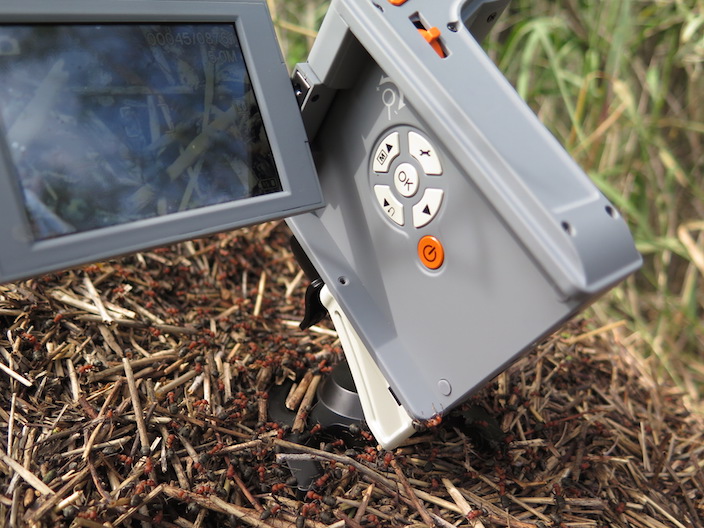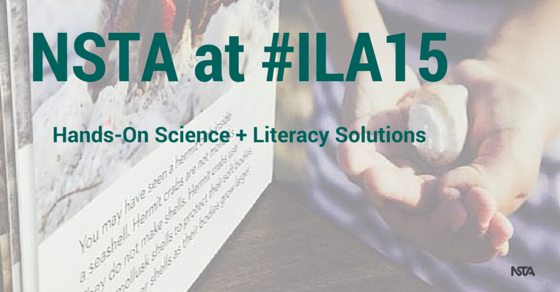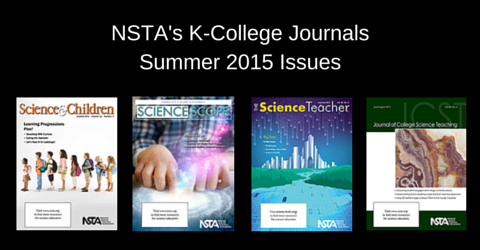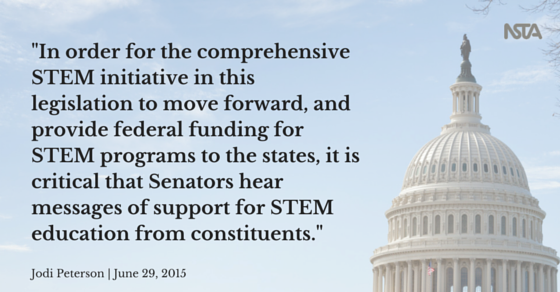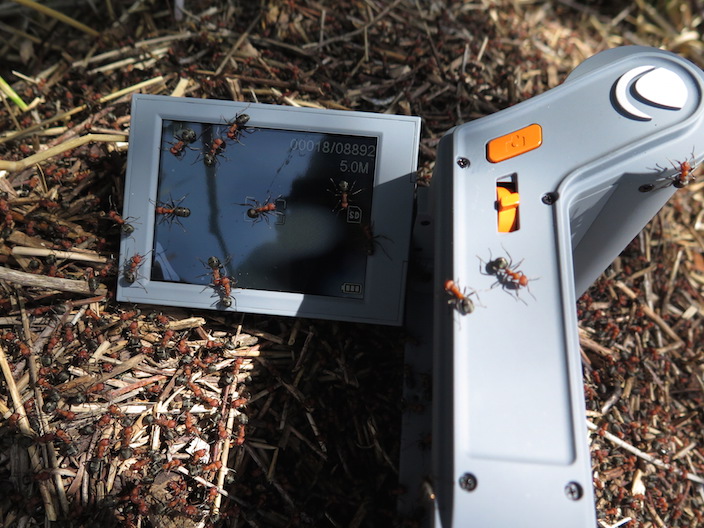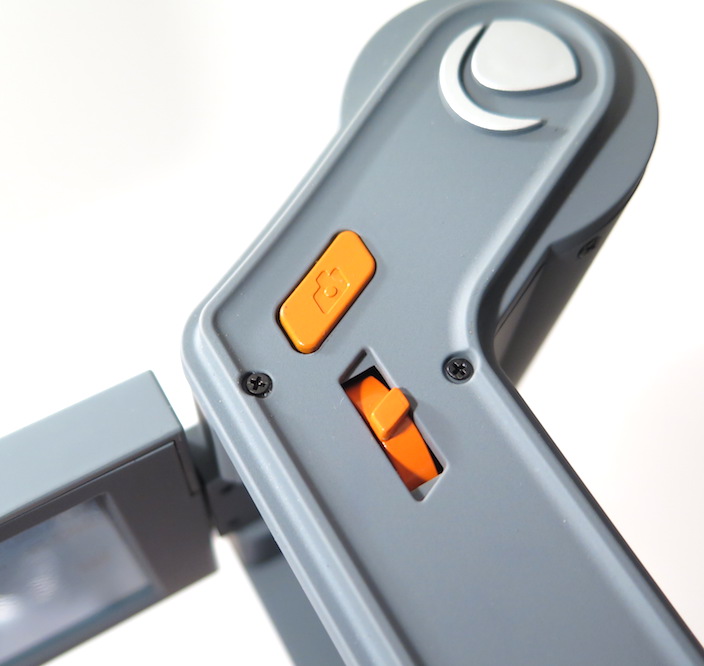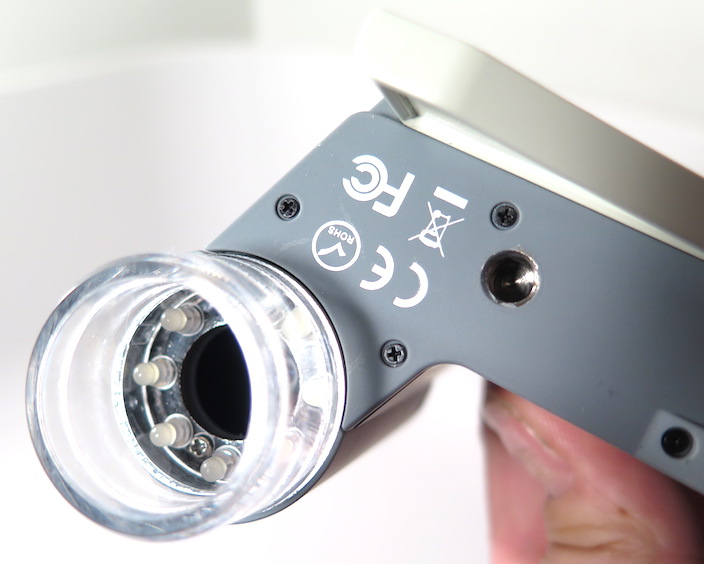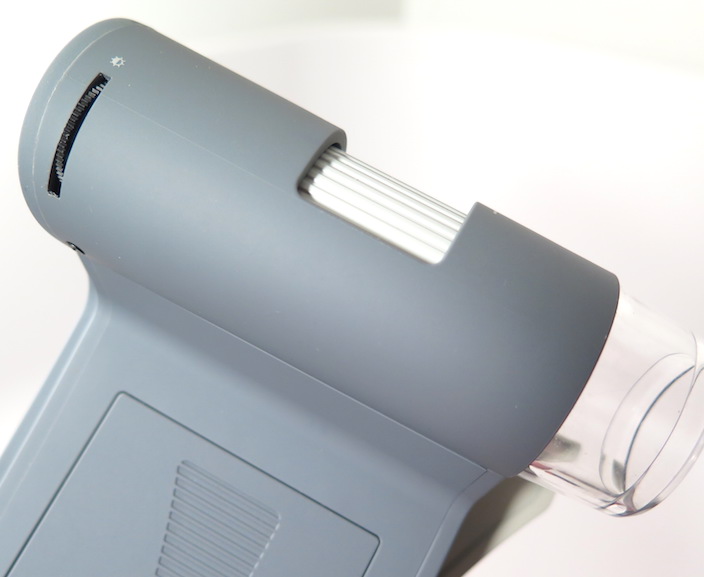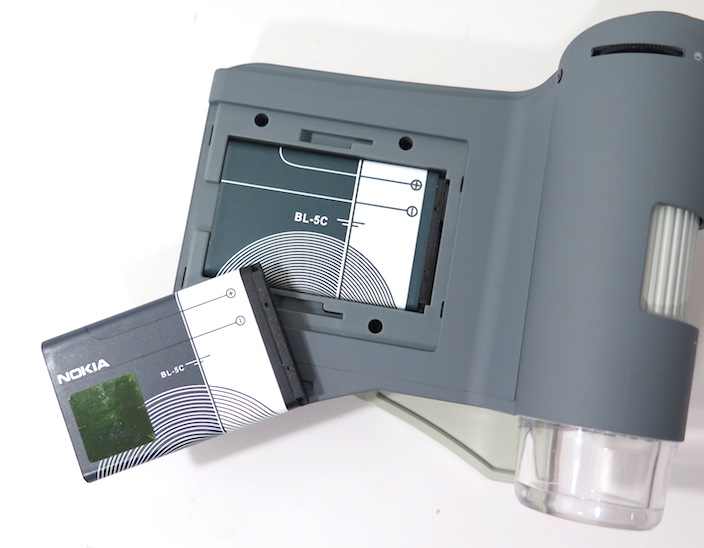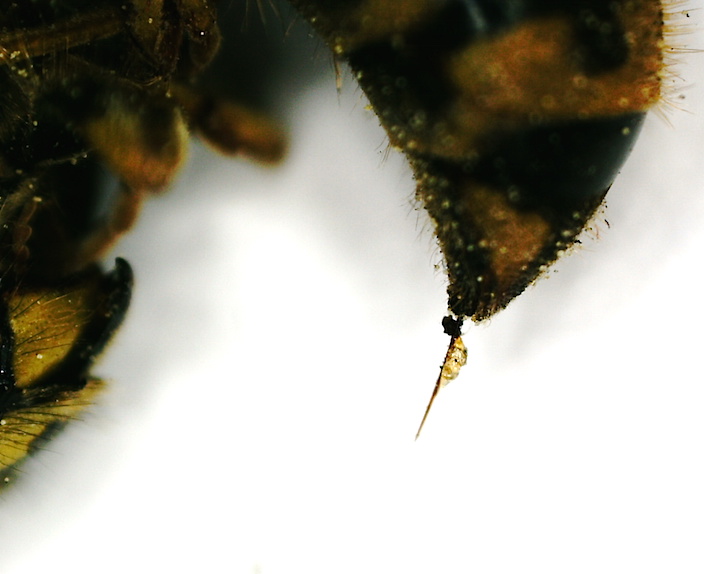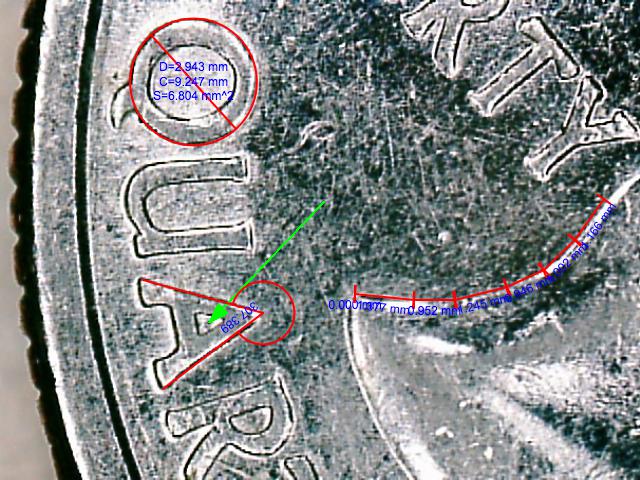NSTA at #ILA15: Hands-On Science + Literacy Solutions
By Lauren Jonas, NSTA Assistant Executive Director
Posted on 2015-07-07
The 2015 annual conference of the International Literacy Association (ILA) takes place July 18-20. Featuring general session speakers Shaquille O’Neal, Octavia Spencer, Shiza Shahid, and Stephen Peters, the conference organizers state: “Illiteracy is a solvable problem, and together, we can make a difference! Amplify your efforts by joining forces with us at ILA 2015 in St. Louis, where you’ll get information and inspiration to transform your students’ lives. “ The National Science Teachers Association (NSTA) will be there to join this meaningful movement, resolved to end illiteracy.
NSTA’s position on Elementary School Science states “we support the notion that inquiry science must be a basic in the daily curriculum of every elementary school student at every grade level.” And we believe that science is a key component of a complete and rigorous curriculum for all students. Supported by our community of expert educators with a solid science education background and a passion for literacy, we’ve assembled a powerful resource collection that helps integrate science and literacy at the elementary level. Join us in St. Louis, Missouri, July 18-20 to learn more, and stop by our booth to share your ideas with us about the direction in which you see education going.
When you do visit us, whether onsite or online, we hope you will sample some of our resources:
- Professional journals, packed with science teaching techniques, lessons, and activities
- Classroom-tested tools for integrating science and literacy in elementary classrooms
- Formative assessment strategies that thousands of educators are using now
- Quick reference guides to NGSS implementation
- NSTAKids books… fun for kids, accurate science for teachers
Visit booth #524 onsite to learn more, and don’t miss these special events:
In-Booth Events
Saturday, July 18
11 a.m.–5 p.m. Meet NSTA Retiring President Juliana Texley
11 a.m.–12 p.m. Book signing by Picture Perfect Science authors Emily Morgan and Karen Ansberry
1 p.m.–2 p.m. Book signing by Picture Perfect Science authors Emily Morgan and Karen Ansberry
2 p.m.–4 p.m. Book signing by Inquiring Scientists, Inquiring Readers author Jessica Fries-Gaither
Sunday, July 19
10 a.m.–12 p.m. Book signing by Inquiring Scientists, Inquiring Readers author Jessica Fries-Gaither
4 p.m. Book Raffle! Complete Set (6) of the “Next Time You See” NSTA Kids book
Sessions
Saturday, July 18
3 p.m.–5 p.m.
Session: Picture Perfect Science: Using Children’s Literature to Guide Inquiry
Karen Ansberry and Emily Morgan
Session #00280
Room 229
Monday, July 20
11 a.m.–12 p.m.
Session: Science as a Vehicle for Improving Literacy Skills
Jessica Fries-Gaither
Session #00281
Room 225
1 p.m.–2 p.m.
Session: Choosing and Using Great Science Trade Books
Juliana Texley and Suzanne Flynn
Session #00793
Room 242
Can’t make it to the booth? Use promo code ILA15 online at the NSTA Science Store to receive the same 20% discount on all NSTA Press publications* that our members get—plus $5 off NSTA membership for yourself or a science teacher on your team!
*Offer good only on NSTA Press publications, from July 11–August 31, 2015, and cannot be combined with any other offer or discount.
The mission of NSTA is to promote excellence and innovation in science teaching and learning for all.
Follow NSTA
NSTA President Carolyn Hayes Welcomes NSTA's New Committee, Advisory Board, and Panel Members
By Guest Blogger
Posted on 2015-07-06
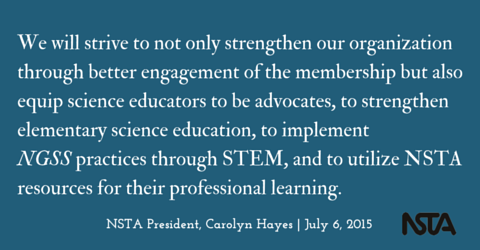 On behalf of the leadership of the National Science Teachers Association (NSTA), NSTA staff, and NSTA members, I would like to welcome and thank the NSTA members listed below, who are newly serving on our Standing Committees, Advisory Boards, and Panels; their terms of appointment began on June 1, 2015, and they’ve already begun doing important work like planning for our upcoming area conferences, getting the word out about legislation affecting teachers across the United States, and reviewing our journals and other publications!
On behalf of the leadership of the National Science Teachers Association (NSTA), NSTA staff, and NSTA members, I would like to welcome and thank the NSTA members listed below, who are newly serving on our Standing Committees, Advisory Boards, and Panels; their terms of appointment began on June 1, 2015, and they’ve already begun doing important work like planning for our upcoming area conferences, getting the word out about legislation affecting teachers across the United States, and reviewing our journals and other publications!
With the adoption of the NSTA Strategic Goals each committee, advisory board, and panel will focus on some aspect of the implementation plan for the upcoming year. We will strive to not only strengthen our organization through better engagement of the membership but also equip science educators to be advocates, to strengthen elementary science education, to implement NGSS practices through STEM, and to utilize NSTA resources for their professional learning.
Your presidential chain (which includes me, President-Elect Mary Gromko, and Retiring President Juliana Texley), Board and Council, are very grateful for the willingness of these members to join our team. We will work together to develop creative attitudes in science, technology, engineering, and mathematics for all our students. NSTA members who are interested in volunteering for a position on one of our committees, advisory boards, or review panels can find more information online. Not a member, but interested in shaping the direction of science education in the future? See all of our member benefits here.
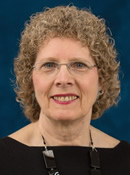 Carolyn Hayes is the NSTA President, 2015-2016; follow her on Twitter at caahayes.
Carolyn Hayes is the NSTA President, 2015-2016; follow her on Twitter at caahayes.
New Committee/Advisory Board/Panel Members
College
Cindy Birkner
Sarah Lang
John Wiginton
Coordination
David Johnson
Linda Schoen Giddings
Andria Stammen
High School
Lauren Case
Courtney Leifert
Steven Wood
Informal
Ed Barker
Joy Kubarek
Brad Tanner
Middle Level
Justin Brosnahan
Melanie Canaday
Tiauna Washington
Multicultural
Lisa Ernst
Sandra Osorio
Darrell Walker
Preschool-Elementary
Patricia Paulson
Stephanie Selznick
Danae Wirth
Preservice
David Crowther
Bianca Deliberto
Cynthia Gardner
Carolyn Mohr
Kira Heeschen (Preservice Teacher Rep)
Elaine Scarvey (Preservice Teacher Rep)
NSTA Teacher Accreditation
Carole Lee
Starlin Weaver
Professional Development
Cherry Brewton
Brittany Head
Catherine Shelton
Research
Victor Sampson
Kristen Sumrall
Cathy Wissehr
Audit
Rene Carson
Awards
Mary Maddox
Sheila Smith
Pam Vaughan
Budget
Jean Tushie
Nominations
Elsa Bailey
Michelle Daml
Gerald Darling
Janice Koch
Barbara Morrow
Aerospace
Kathy Biernat
Jacqueline Pfeiffer
Taylor Planz
Conference
Monica Ellis
Development
Patty McGinnis
International
Kathryn Elkins
Faiza Abdul Qayyum
Antoinette Schlobohm
Investment
Steve Rich
Journal of College Science Teaching
Issam Abi-El-Mona
Elizabeth Allan
David Wojnowski
NSTA Reports
Aaron Eling
Suzan Locke
Derenda Marshall
Retired
Lloyd Barrow
Gary Koppelman
Carrie Launius
Marilyn Richardson
Science and Children
Judy Clephane
Sherry Harrington
Laura Maricle
Science Matters
Ann Huber
Susan Tate
Jeni Williams
Science Safety
Patricia Hillyer
Rick Rutland
Rebecca Stanfield
Mary Loesing (reappointed)
Kathleen Brooks (extended)
Science Scope
Mary Pella-Donnelly
Heather Janes
Mary Elizabeth McKnight
Special Needs
Carol Cao
Meribeth Lowe
Sheryl Sotelo
Technology
Donna Cole
Kristen Kohli
Mijana Lockard
TST
Brian Bollone
Geri Granger
Traci Richardson
Urban Science
Brandon Gillette
Alton Lee
EllaJay Parfitt
CBC
Genet Mehari
Len Sharp
Trupti Vora
New Science Teachers
Alaina Anderson
Rebecca Gibson
Sumi Hagiwara
Shell
Peggy Carlisle
Carrie Lanius
Kristen Poindexter
The mission of NSTA is to promote excellence and innovation in science teaching and learning for all.
Follow NSTA
NSTA’s K-College July 2015 Science Education Journals Online
By Lauren Jonas, NSTA Assistant Executive Director
Posted on 2015-07-05
Varied ways to use instructional sequences that support valid learning, making science accessible to all students, big data, and identifying textbooks or other reading materials that are written at the appropriate reading grade levels—these are the themes of the Summer 2015 journal articles from the National Science Teachers Association (NSTA). Browse through the thought-provoking selections below and learn more about families learning together, integrated STEM units, harvesting data, peer-led team learning, and other important topics in K–College science education.
Science and Children
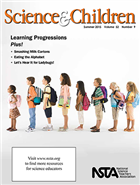 How much easier it would be, how much more learning would occur, and how much time we would save if all students brought the same background knowledge and skills to what they are learning? This issue of Science and Children employs the Next Generation of Science Standards (NGSS) to show the variety of ways in which you can use an instructional sequence that supports valid learning.
How much easier it would be, how much more learning would occur, and how much time we would save if all students brought the same background knowledge and skills to what they are learning? This issue of Science and Children employs the Next Generation of Science Standards (NGSS) to show the variety of ways in which you can use an instructional sequence that supports valid learning.
Featured articles (please note, only those marked “free” are available to nonmembers without a fee):
- Free – Dig Into Fossils!
- Eating the Alphabet
- Free – Editor’s Note: Identifying a Progression of Learning
- Families Learning Together
- Free – Guest Editorial: The Next Generation Science Standards: Where Are We Now and What Have We Learned?
- Let’s Hear It for Ladybugs!
- Smashing Milk Cartons
- Full Table of Contents
Science Scope
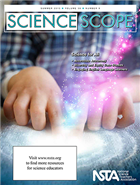 Making science accessible to all students should be the goal of every classroom science teacher. In this issue we share a variety of lessons you can use to overcome various socioeconomic, physical, and language barriers facing today’s students. We hope you can use these activities to help all of your students reach the stars.
Making science accessible to all students should be the goal of every classroom science teacher. In this issue we share a variety of lessons you can use to overcome various socioeconomic, physical, and language barriers facing today’s students. We hope you can use these activities to help all of your students reach the stars.
Featured articles (please note, only those marked “free” are available to nonmembers without a fee):
- Artificial Floating Islands: An Integrated STEM Unit
- Collaborative Concept Maps: A Voice for All Science Learners
- Free – Editor’s Roundtable: Charting a Course Toward NGSS Alignment
- Engineering Progressions in the NGSS Diversity and Equity Case Studies
- Science Meets Engineering: Applying the Design Process to Monitor Leatherback Turtle Hatchlings
- Supporting Science Access for All Students: Using Content Enhancements to Create Pathways to the Big Ideas
- The Fish Weir: A Culturally Relevant STEM Activity
- Free – The Next Generation Science Standards: Where Are We Now and What Have We Learned?
- Touching the Stars: Making Astronomy Accessible for Students With Visual Impairments
- Full Table of Contents
The Science Teacher
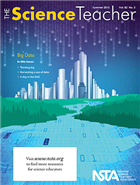 Ever-increasing volumes of information from sensors, satellites, cell phones, telescopes, global information systems, and social media provide unprecedented opportunities for scientists, citizens, and students to investigate complex systems. Scientific progress doesn’t result from simply accumulating data. But there’s no doubt that big data is revolutionizing fields as diverse as astronomy, marketing, genomics, climate science, oceanography, social science, and health care. Big data has the potential to transform science teaching and learning as well. Our students can engage in the higher-order thinking involved in analyzing and interpreting large science data sets and designing their own inquiries to discover patterns and meaning in mountains of accessible data, as authors in this issue of The Science Teacher illustrate.
Ever-increasing volumes of information from sensors, satellites, cell phones, telescopes, global information systems, and social media provide unprecedented opportunities for scientists, citizens, and students to investigate complex systems. Scientific progress doesn’t result from simply accumulating data. But there’s no doubt that big data is revolutionizing fields as diverse as astronomy, marketing, genomics, climate science, oceanography, social science, and health care. Big data has the potential to transform science teaching and learning as well. Our students can engage in the higher-order thinking involved in analyzing and interpreting large science data sets and designing their own inquiries to discover patterns and meaning in mountains of accessible data, as authors in this issue of The Science Teacher illustrate.
YouTube fans, watch high school science teacher and TST Field Editor, Steve Metz, introduce this month’s issue.
Featured articles (please note, only those marked “free” are available to nonmembers without a fee):
- Day in the Field
- Free – Editor’s Corner: Big Data
- Harvesting a Sea of Data
- Playing With Science
- Free – The Next Generation Science Standards: Where Are We Now and What Have We Learned?
- Free – Thinking Big
- Full Table of Contents
Journal of College Science Teaching
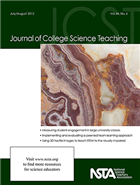 How do you handle the challenge of identifying textbooks or other reading materials that are written at the appropriate reading grade level yet still offer the desired content? See “Assessing the Readability of Geoscience Textbooks” to learn how one author assessed the readability of various materials to ensure that the text was not too challenging for students to comprehend. The Case Study article offers a detailed, step-by-step guide to helping students (and instructors) write case studies that are creative, well researched, and useful for teaching a topic to others. And don’t miss the Research and Teaching article that explores the effectiveness of incorporating 3D tactile images critical for learning STEM into entry-level lab courses for both sighted and vision-impaired students.
How do you handle the challenge of identifying textbooks or other reading materials that are written at the appropriate reading grade level yet still offer the desired content? See “Assessing the Readability of Geoscience Textbooks” to learn how one author assessed the readability of various materials to ensure that the text was not too challenging for students to comprehend. The Case Study article offers a detailed, step-by-step guide to helping students (and instructors) write case studies that are creative, well researched, and useful for teaching a topic to others. And don’t miss the Research and Teaching article that explores the effectiveness of incorporating 3D tactile images critical for learning STEM into entry-level lab courses for both sighted and vision-impaired students.
Featured articles (please note, only those marked “free” are available to nonmembers without a fee):
- Free – Are “New Building” Learning Gains Sustainable?
- Assessing the Readability of Geoscience Textbooks, Laboratory Manuals, and Supplemental Materials
- Collaboration-Focused Workshop for Interdisciplinary, Inter-Institutional Teams of College Science Faculty
- Implementing and Evaluating a Peer-Led Team Learning Approach in Undergraduate Anatomy and Physiology
- Research and Teaching: A New Tool for Measuring Student Behavioral Engagement in Large University Classes
- Research and Teaching: Aligning Assessment to Instruction: Collaborative Group Testing in Large-Enrollment Science Classes
- Research and Teaching: Methods for Creating and Evaluating 3D Tactile Images to Teach STEM Courses to the Visually Impaired
- Targeted Courses in Inquiry Science for Future Elementary School Teachers
- Using Popular Text to Develop Inquiry Projects: Supporting Preservice Teachers’ Knowledge of Disciplinary Literacy
- Full Table of Contents
Get these journals in your mailbox as well as your inbox—become an NSTA member!
Follow NSTA
Our Most Popular NSTA Press Book Quotes
By Carole Hayward
Posted on 2015-07-02
For nearly two years, NSTA Press has been pinning quotes from its books to Pinterest. Our followers often repin these interesting, informative, and often inspirational quotes. These are the books that have garnered the most attention. Are you following us on Pinterest?
 |
 |
 |
 |
 |
 |
 |
 |
 |
 |
 |
 |
 |
 |
 |
 |
For nearly two years, NSTA Press has been pinning quotes from its books to Pinterest. Our followers often repin these interesting, informative, and often inspirational quotes. These are the books that have garnered the most attention. Are you following us on Pinterest?
Three major features of “doing” science
By Robert Yager
Posted on 2015-07-02
NSTA has identified three major features of students who actually “Do” science. The first of these is Human explorations of the natural world. The second includes Explanations of the objects and events encountered. And the third requires Evidence to support the explanations proposed. These features should be incorporated in science teaching for all students to ensure that students experience the actual “Doing of Science!”
We want students (and teachers) around the world to experience science in every K-16 science classroom. If we’re doing it right, students will “question”, “think creatively”, and “gather evidence” continually to support the explanations. It is especially important that the validity of the explanations proposed be established. Such experiences with “science” are not typically taught to students by science teachers. All (both students and teachers) should share explanations and interpretations about objects and events which they themselves have encountered.
The use of textbooks, laboratory manuals, teacher lectures, and other quick fixes for teacher actions are all opposite examples of “doing” science. Evaluating what students merely remember and repeat individually and/or collectively does not result in real science learning. Students must formulate their own ideas, including minds-on experiences, to really understand all aspects of “doing” science.
G. G. Simpson explained the “doing of science” looks like this:
- Asking questions about the objects and events encountered;
- Formulating possible answers/explanations;
- Collecting evidence in nature to determine the validity of the explanations offered;
- Checking on other attempts made by other experts; and
- Sharing the solution(s) with others.
“Science” is not like art and drama where teachers admire and/or criticize the performances of their best students. “Science” starts with unknowns and then seeking answers to explain them!
Robert E. Yager
Professor of Science Education
University of Iowa
NSTA has identified three major features of students who actually “Do” science. The first of these is Human explorations of the natural world. The second includes Explanations of the objects and events encountered. And the third requires Evidence to support the explanations proposed. These features should be incorporated in science teaching for all students to ensure that students experience the actual “Doing of Science!”
Exploring the properties of clay
By Peggy Ashbrook
Posted on 2015-07-01
 Finding bits of clay pottery made and discarded by people hundreds of years ago reminds me of how this useful material can be a valuable addition to a preschooler’s experience. Of the earth but not commonly found on playgrounds, clay could be regularly provided in a bin for sensory experiences or building material. It can be made into almost anything! I wrote about the process we used to introduce clay work in the Summer 2015 issue of Science and Children.
Finding bits of clay pottery made and discarded by people hundreds of years ago reminds me of how this useful material can be a valuable addition to a preschooler’s experience. Of the earth but not commonly found on playgrounds, clay could be regularly provided in a bin for sensory experiences or building material. It can be made into almost anything! I wrote about the process we used to introduce clay work in the Summer 2015 issue of Science and Children.
 When children first encountered the clay indoors at a table, they were immediately drawn to this new material. After working with the clay, children realized that it stuck to their hands, and some began to purposefully coat their hands in a way they could never do with playdough. This same property made other children avoid the clay. Having a system to rinse off hands in a tub of water after clay work, and before washing them, helped children feel comfortable with the “stickiness” of clay, and saved the excess clay so it didn’t get washed into the drains. Because the children were so used to the feel and texture of playdough, it took some time for them to capably shape it into balls, snakes and castles.
When children first encountered the clay indoors at a table, they were immediately drawn to this new material. After working with the clay, children realized that it stuck to their hands, and some began to purposefully coat their hands in a way they could never do with playdough. This same property made other children avoid the clay. Having a system to rinse off hands in a tub of water after clay work, and before washing them, helped children feel comfortable with the “stickiness” of clay, and saved the excess clay so it didn’t get washed into the drains. Because the children were so used to the feel and texture of playdough, it took some time for them to capably shape it into balls, snakes and castles.
We made sticks available and the children incorporated the two materials. It was interesting that the class of older twos and the class of fours both approached the materials in the same way–sticks stuck into a base of clay. In the fall I will introduce the clay on the playground and see what the children do with it as they have even more time to learn its many uses. It can be used to model 3D forms, draw on its surface, and paint with in a watered down form. Will they incorporate sticks and leaves, decorate it with pinecones or knead in sand to create a new building material?
 Finding bits of clay pottery made and discarded by people hundreds of years ago reminds me of how this useful material can be a valuable addition to a preschooler’s experience. Of the earth but not commonly found on playgrounds, clay could be regularly provided in a bin for sensory experiences or building material.
Finding bits of clay pottery made and discarded by people hundreds of years ago reminds me of how this useful material can be a valuable addition to a preschooler’s experience. Of the earth but not commonly found on playgrounds, clay could be regularly provided in a bin for sensory experiences or building material.
Legislative Update
ESEA (No Child Left Behind) Reauthorization Bill Scheduled for Senate Action July 7
By Jodi Peterson
Posted on 2015-06-29
The Senate debate on the reauthorized Elementary and Secondary Education Act (known as No Child Left Behind) could start on July 7. According to Education Week, Senate Majority Leader Mitch McConnell has officially scheduled the bill—the Every Child Achieves Act (S. 1177)—for floor action following the July 4 recess.
This action comes days after 10 major education groups—including the National Education Association, the American Federation of Teachers, the Council of Chief State School Officers, the American Association of School Administrators, National PTA, and the National Association of State Boards of Education, sent a letter to Senators urging immediate action on the bill.
As reported in the April 17 NSTA Legislative Update, thanks to the leadership of Senator Al Franken (D-MN), Mark Kirk (R-IL), and Patty Murray (D-WA), an amendment to include a dedicated STEM K-12 program in the Every Child Achieves Act was adopted (by a vote of 12-10) when the bill was considered by the Health, Education, Labor and Pensions (HELP) Committee. This will ensure that states would continue to receive dedicated support for STEM activities from the U.S. Department of Education. The language stipulates that each state would receive formula-based funding to support partnerships between local schools, businesses, universities, and non-profit organizations to improve student learning in the critical STEM subjects. Each state would choose how to spend and prioritize these funds, which can support a wide range of STEM activities from in-depth teacher training, to engineering design competitions, to improving the diversity of the STEM workforce.
The Every Child Achieves Act also retains the current federal testing requirement—students would continue to be tested in English and math in third through eighth grades as well as once in high school, and science tests would also be administered three times between third and 12th grade—but the language does away with the current NCLB accountability provisions and allows states to develop their own accountability systems.
Read the April 10 NSTA Legislative Update on the Every Child Achieves Act.
In order for the comprehensive STEM initiative in this legislation to move forward, and provide federal funding for STEM programs to the states, it is critical that Senators hear messages of support for STEM education from constituents.
We have set up a sample letter, which you can personalize and send directly to your Senators, on the STEM Education Coalition website to help you do this. Please take a moment to contact your Senators now
In the House, National Journal is reporting that House leaders will also be bringing their bill to reauthorize No Child Left Behind (the Student Success Act) back for floor debate, and will allow new amendments that would allow schools to keep federal money but opt out of the federal regulations that come with it, and a possible amendment to create a voucher system. The bill was on the House floor earlier this spring, but was pulled from consideration by House leaders before a vote on final passage.
Senate Appropriations Sub-Committee Advances Education Funding Bill: Both the House and Senate Appropriations LHHS/Education subcommittees have passed their FY 16 spending bills, and once again House funding for the Math and Science Partnership program at the U.S. Department of Education was eliminated. Report language on the House LHHS Education bill follows:
Mathematics and Science Partnerships. “The Committee recommends no funding for Mathematics and Science Partnerships, which is $152,717,000 below the fiscal year 2015 enacted level and $202,717,000 below the budget request. This program provides professional development for math and science teachers; these activities can be carried out under other authorities funded in this bill and through other federal agencies such as the National Science Foundation.”
The Senate education funding bill did provide continued support for the Math and Science Partnership program at the Department of Education, at $149 million. We are watching this activity and will stress that the final funding agreement include the Senate funding level.
Stay tuned and look for upcoming issues of NSTA Express for the latest information on developments in Washington, D.C.
Jodi Peterson is Assistant Executive Director of Legislative Affairs for the National Science Teachers Association (NSTA) and Chair of the STEM Education Coalition. e-mail Jodi at jpeterson@nsta.org; follow her on Twitter at @stemedadvocate.
The mission of NSTA is to promote excellence and innovation in science teaching and learning for all.
Follow NSTA
Drifters Take Students on Scientific Ocean Journeys
By Lynn Petrinjak
Posted on 2015-06-29
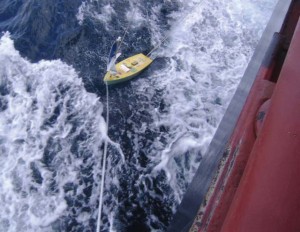
The Charger, a 5-foot-long drift boat, has been launched from larger vessels several times throughout its journey across the Atlantic Ocean. Photo courtesy of the crew of the Philadelphia Express
For three years, sophomores at Swampscott High School in Swampscott, Massachusetts, have been releasing drifters—devices that float along and track ocean currents—as part of Chris Ratley’s College Placement II Geometry class.
To a casual observer, geometry class “might not seem the right place for it, but there is so much math you might not think of,” Ratley explains. “These are not honor students; they are sophomores with lots on the ball, but not showing it in the classroom.”
Ratley says the drifter program, which requires students to build, test, launch, and track the devices via the global positioning system, motivates students because they know “their data is being used in an actual science [research program].” Ratley and Brandy Wilbur, the school’s science, technology, engineering, and mathematics (STEM) coordinator, learned how to build drifters from Jim Manning, an oceanographer with the National Oceanic and Atmospheric Administration (NOAA).
Manning, who studies currents around fishing grounds, has been deploying drifters since the early 1990s. “For the last 10 years, I’ve been getting schools involved in building them,” he says. “We wanted to expand the [U.S.] Integrated Ocean Observing System (IOOS).” He says IOOS, which is an umbrella organization of groups making observations of the ocean, was modeled on the National Weather Service.
“Like the National Weather Service puts up weather balloons, we put out drifters,” Manning continues. “Ideally we will have schools preparing drifters, putting them out every year, every couple [of] months.”
Manning has presented workshops and attended meetings of marine education organizations to connect with educators and other groups. He also seeks out grants, such as one from NOAA’s Marine Debris Program, to fund the drifter program. “The Marine Debris Grant will get us 32 drifters. We can just send out equipment to schools, and the schools don’t have to come up with a couple hundred dollars for a transmitter.”
Manning estimates he has worked with nearly 80 different schools. Although students from preK through graduate school have participated in the program, he suggests, “It is best suited for juniors or seniors in high school. They can work with tools to build drifters themselves and be exposed to what oceanography really is. We are trying to recruit more physical oceanographers. Drifters validate the numerical computer models of ocean [currents]. We don’t have many students at the graduate or undergraduate levels who know about this field.
“We want students to be able to download [data supplied by the drifters] and code. We are teaching them basic Python code…The second half of the drifter project is everything from calculating speed given latitude and longitude to dispersion [of the drifters]. It goes from simple addition to complex mathematics. You can compare the observed track to the estimated track. You can do it simply or more complicated. At the higher levels, we’re teaching how to download wind data, river data. As they get further along…students can download model output and try to predict where their drifter will go.”
At Swampscott High School, students build the drifters according to standardized specifications from Manning, but also have the opportunity to modify parts of the design using various materials from home improvement stores. The basic design is composed of a mast with four crossed poles that hold submerged sails, weights, and a GPS unit. “The whole thing is about 4’ tall and 3’ wide. It doesn’t look like a modern scientific device,” says Ratley.
“The research is to make the designs more environmentally friendly [while keeping the] device sturdy enough to stay together,” says Wilbur. “This is a way to bring oceanography into math class. Students are super-engaged because it’s a real research project. They provide meaningful data [for NOAA]…It provides [students] with a different way to learn, an authentic project that means something [while] they’re learning content.
“These devices are deployed close to shore; they provide real-time data and help researchers verify the mathematical models of the ocean current” used to predict such things as the current’s impact on commercial fishing species and where the current might take a person who fell overboard, says Wilbur. “A drifter provides real-time information about how surface waters are really moving.”
Ratley’s geometry students learn how to make and interpret measurements, use hand tools, test buoyancy, and discuss wind speeds. While developing their math skills, his students are “getting into navigation, figuring out distance, current, wind directions. I’m learning from it too…One of the hardest things when building something is how to manage building and instrumentation while making sure all students are involved,” Ratley notes.
Cassie Stymiest, a program manager with the Northeastern Regional Association of Coastal and Ocean Observing Systems (NERACOOS), has been working with Manning on the drifter program, conducting workshops for educators and compiling resources that she has posted online at http://neracoos.org/drifters. The site includes a map displaying the locations of drifters currently in the water, instructions for building surface drifters, and more. Stymiest says, “All the drifter data are used to validate our circulation models, which is essential to improving search-and-rescue operations, understanding red tides, and studying other oceanographic phenomena. There’s so much you can do with it.”
Crossing the Atlantic
While surface drifters like those launched by Swampscott students are moved by water currents, others are designed to use wind power as well. Barbara Nidzgorski, Young Scholars program coordinator at John Winthrop Middle School in Deep River, Connecticut, purchased a drifter boat from Educational Passages in 2012. Winthrop seventh and eighth graders decorated the 5’ boat and included information about their school and a flash drive with a recording of a performance by the school’s band and chorus in the Charger’s watertight chamber. The boat was launched in May of that year off the coast of South Carolina. After being driven back to shore by storms, the boat was relaunched by a SCUBA company. Since then, the Charger has traveled north to Newfoundland and across the Atlantic Ocean to Wales. It was launched once more by a ship out of England’s London Thamesport before traveling to Portugal and then to Guyana in South America.
Nidzgorski says the boat has been used in numerous classes, from science to math to art. “Every single area of education can be included [in a drifter program]: marine science, ocean science, math,…We had kids predicting where it was going to be. In the beginning, it was pinging six times a day; later, twice a day. There’s a lot of vocabulary; kids have written about it. The biggie is latitude and longitude.”
The program also has forged connections across the school, community, and the world. Local companies donated services and marine paint to help the Winthrop students prepare the boat for launch. A message on the boat instructing anyone finding it to take the vessel to a school has led to exchanges with students in Wales and Portugal. As the boat was refurbished before being released on its journey once again, students in those countries met with the adults who repaired the boat.
Nidzgorski is now working to get the Charger either shipped back to Connecticut or relaunched from Guyana. If relaunched, she hopes the boat will be able to complete a circuit of the Atlantic Ocean by arriving in Florida. “It’s 80% of the way around,” she proclaims proudly. Regulations in Guyana have prevented its relaunch so far, but Nidzgorski says the school has asked state officials to help find a way to get the boat headed home or back out to sea.
“So many cool things happen, every [boat’s adventure] is different. It’s pretty amazing…The investment you put in, you get so much more back,” she says. “This is the way our ancestors traveled: the current and the wind. That’s the way our initial explorers came across the ocean.”
Drifter Resources
For more information on drifters, educators can visit www.studentdrifters.org, http://neracoos.org/drifters, and www.educationalpassages.com, or e-mail Jim Manning at james.manning@noaa.gov.
This article originally appeared in the Summer 2015 issue of NSTA Reports, the member newspaper of the National Science Teachers Association. Each month, NSTA members receive NSTA Reports featuring news on science education, the association, and more. Not a member? Learn how NSTA can help you become the best science teacher you can be.
The mission of NSTA is to promote excellence and innovation in science teaching and learning for all.
Follow NSTA
Get Lost in the Magic of Learning with the Celestron Flipview Digital Microscope
By Martin Horejsi
Posted on 2015-06-26
One of the wonderful things about the amazing science education technology available to teachers today is that the tech can disappear—in a good way. The Celestron Flipview digital microscope is one of them.
